|
za 2004 god.
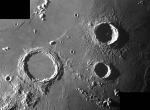 Three Cheers for Three As!
Three Cheers for Three As!
5.04.2004 | Lunnoe foto dnya
64 lunar craters have names than begin with the letter A. Three of them are shown here: Archimedes (diameter = 83 km; depth = 2.1 km), Autolycus (39 km; 3.4 km) and Aristillus (55 km; 3.6 km). The latter two craters are similar in morphology and in age.
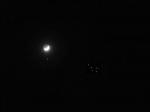 Conjunctions Galore!
Conjunctions Galore!
4.04.2004 | Lunnoe foto dnya
Do you ever just go out and enjoy the sky? During the last few nights of March there was a lot to enjoy after sunset. Each night the Moon moved up from planet to planet.
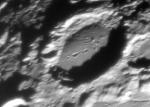 Mercy, Mersenius!
Mercy, Mersenius!
3.04.2004 | Lunnoe foto dnya
Mersenius is in the second rank of lunar craters. Not a must-see like Copernicus, Plato or Gassendi, but a good crater with more interesting features than are obvious. Mersenius is 84 km wide and about 2.3 km deep.
 Interplanetary Comparisons - Mercury Photo of the Day
Interplanetary Comparisons - Mercury Photo of the Day
2.04.2004 | Lunnoe foto dnya
I tricked you - or tried to. Yesterday's April 1st LPOD wasn't really of unidentified craters on the Moon, but was of the planet Mercury, taken by the Mariner 10 spacecraft during flybys...
 What Part of the Moon is This?
What Part of the Moon is This?
1.04.2004 | Lunnoe foto dnya
Recently, some photographs were recovered that had been misplaced since the 1970s. Unfortunately, the labels identifying the spacecraft and areas imaged are no longer attached to them. The pictures show craters and smooth plains that are hard to identify, suggesting that the area has otherwise been poorly imaged.
 Great Graben!
Great Graben!
31.03.2004 | Lunnoe foto dnya
A graben is a linear block of land that has subsided between two parallel faults. On the Moon, such graben are usually called rilles - not the sinuous kind (which are lava channels), but the straight or arcuate ones.
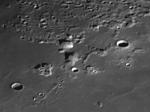 Silicic Domes?
Silicic Domes?
30.03.2004 | Lunnoe foto dnya
Lunar volcanism was pervasive, producing mare lava flows and associated features such as sinuous rilles, pyroclastic deposits and domes. The magmas that made these features were basalts - melted mantle rocks rich in silica, oxygen, iron and magnesium. The latter two elements give basalts the dark color we see in the maria.
 Hoover Dam (and Surroundings)
Hoover Dam (and Surroundings)
29.03.2004 | Lunnoe foto dnya
The 97 km wide crater Arzachel is often overlooked, being near the superstars of Alphonsus and Ptolemaeus. But Steve Keene became fascinated with Arzachel early in March and, despite average seeing, acquired this fine image.
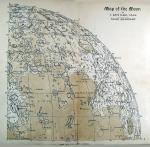 A Quadrant of Elger
A Quadrant of Elger
28.03.2004 | Lunnoe foto dnya
Maps are absolutely necessary for studying the Moon. To observe a specific feature you have to be able to find it. The great books Epic Moon (Sheehan and Dobbins) and Naming and Mapping...
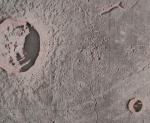 LTO
LTO
27.03.2004 | Lunnoe foto dnya
Lunar Topographic Orthophotomosaic. That mouthful explains the widespread use of the abbreviation LTO for the best topo images ever made for the Moon. Derived from stereo images taken from Apollo orbiting command modules, more than 250 LTOs were produced covering much of the landscape under the flight paths of Apollo 15, 16 and 17.

